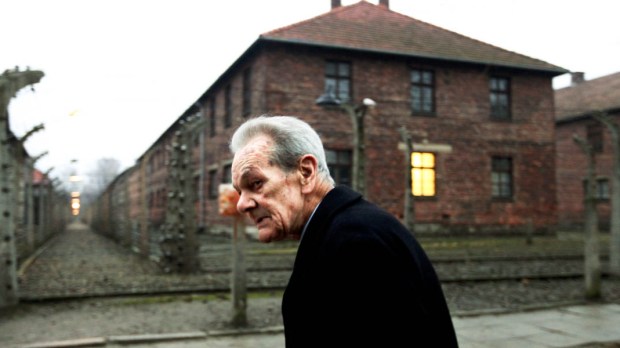The man on the television sat in what must have been his very nice apartment in New York City. He looked to be in his 40s, maybe a little older. He was wearing a turtleneck and a jacket, in the style of the 1970s. As he was talking, he slowly began to cry.
I was standing in a bay at the Museum of Jewish Heritage at the lower end of Manhattan, watching interviews with survivors of the Holocaust. One woman described getting off the train in Auschwitz as a little girl, and soldiers dragging her away from her father and brother, whom she would never see again because they were being sent to die.
But this man affected me most. He began speaking confidently, sharing his memories in the way you’d talk about a rough time way back in first grade. He’d obviously done very well in America. Then his voice started to crack, a little, and I expected him to keep control the way men do rather than cry in public. He broke down very quickly.
Nothing in my life
He sat in front of the camera sobbing. I had to walk away. I can’t imagine what it’s like to go on living, to build a new life, after having suffered what he had suffered. To have been living a normal life that turns so quickly into horror. To know from your own horrific experience that the world is such a place in which men will kill you and your people gladly, happily, cheerfully.
I thought of this when reading a Facebook post from my friend David Goldman, in which he shared his short elegy for his father on the fourth anniversary of his death. David, the formerly anonymous writer “Spengler,” said that his father had asked only that his service to his country be mentioned.
The army offered his father a teaching job at home, but he volunteered to serve in the Pacific. “He considered it a privilege to risk his life for his country,” David said. “When I consider the heroism of this generation, I tremble in awe, and hope only that some of its merit accrues to us.” His father’s two brothers also served, while three family members fought the Germans in the Bielsky brigade in what is now Belarus.
David had inherited from his father his grandfather’s tefillin, which had been made in Belarus in 1901. He had them with him as he spoke. Tefillin are small boxes filled with Scripture passages on parchment that Jewish men wear on their arms and forehead when praying. It’s like a Catholic getting the rosary with which his grandfather had prayed every day for many years.
He then mentioned the Jewish sages’ debate over the meaning of Ezekiel’s story of seeing a valley of dry bones come back to life. “Was it history or only allegory?” he asked, and then quoted a comment from the Talmud. A rabbi said, “The dead whom Ezekiel revived went up to Palestine, married wives and begat sons and daughters.” Another stood up and said, “I am one of their descendants, and these are the tefillin which my grandfather left me [as an heirloom] from them.”
David finished his elegy: “My father’s generation restored the Jewish people from the dry bones of the Holocaust. And these are the tefillin which my grandfather left me as an heirloom from them.”
Our restoration
We have our own fields of dry bones, in our own lives and in the life of the Church. One of our fields is Christianity’s long history of anti-Semitism, which has not gone away. We have our besetting and habitual sins. We have the world’s opposition and a Church made up of sinners.
But we are not left in the field of dry bones. We have also our heroic fathers and our tefillin that have come down to us as heirlooms from our grandfathers. The Church herself is both the father and the tefillin and the mother who gives us the fathers and the tefillin.
We also have examples. That man crying in his apartment in New York City was one of the generation who restored the Jewish people, along with David’s father and uncles. They should be heroes to us, and also models.

